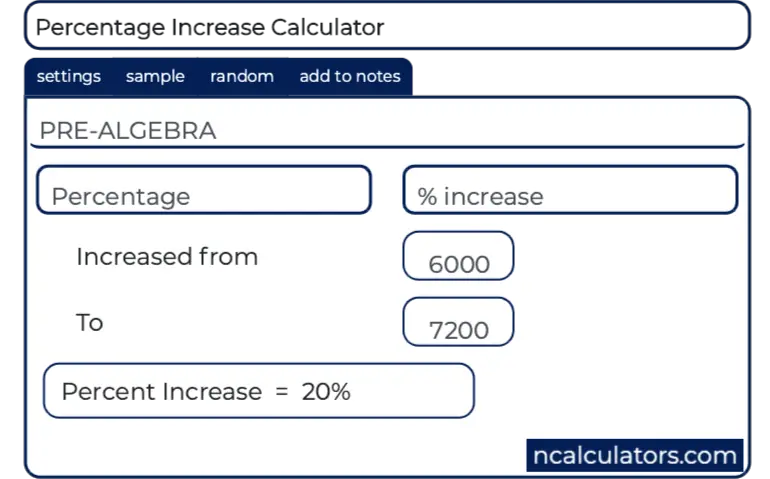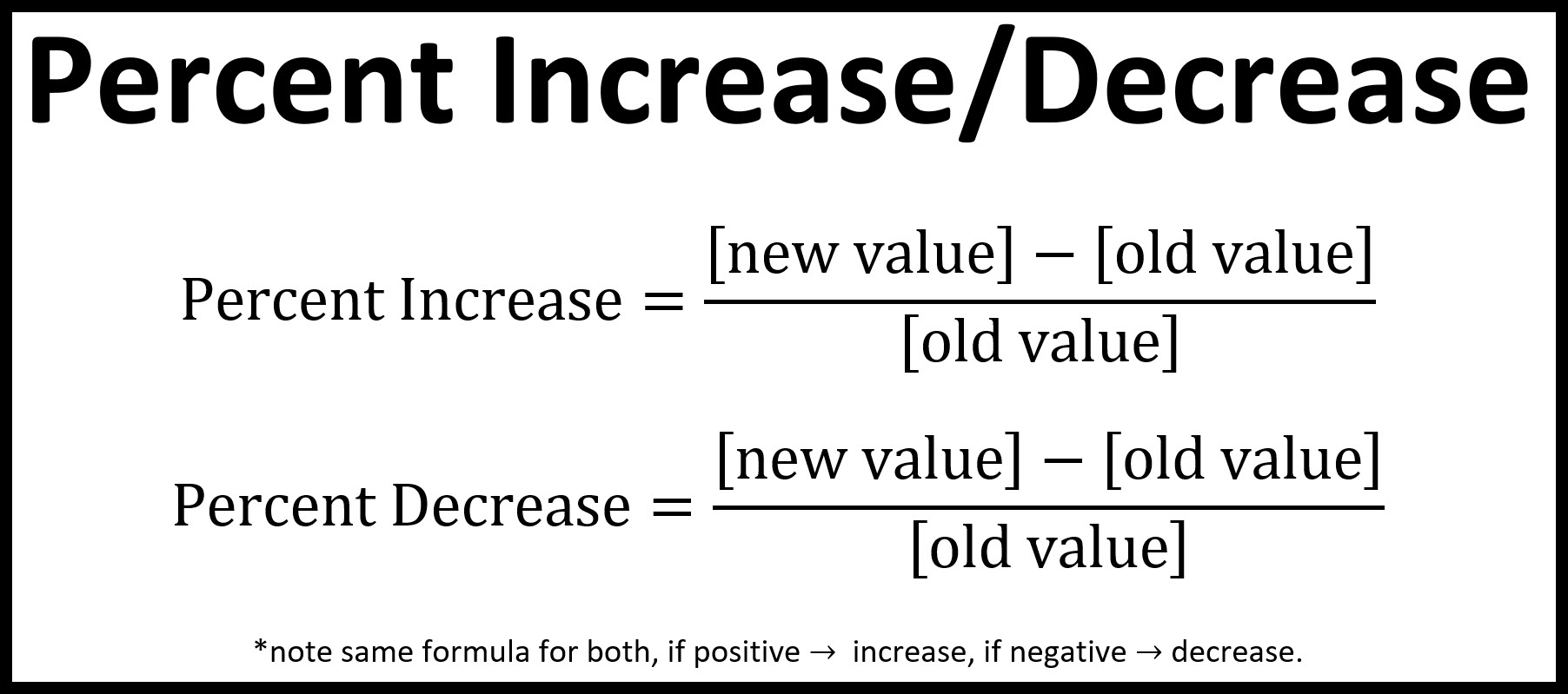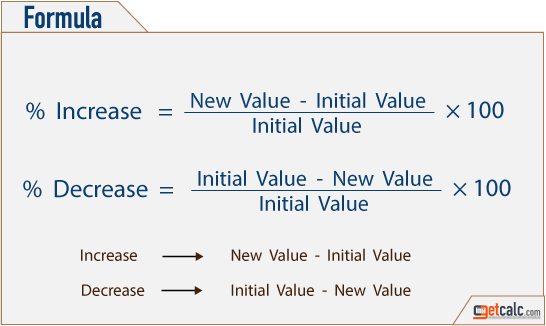

Summary: Percent increase and percent decrease are measures of percent change, which is the extent to which something gains or loses value. What is the percent decrease in length?Īnswer: There was a 33.3% decrease in length. What is the percent increase in the cost of the item?Īnswer: There was an 8% increase in the cost of the item.Įxample 4: Four feet are cut from a 12-foot board. The formula is shown below.Įxample 3: At a supermarket, a certain item has increased from 75 cents per pound to 81 cents per pound.

Convert the resulting decimal to a percent. Another way to remember the procedure is to subtract the old value from the new value and then divide by the old value. Remember that the procedure above asked us to divide by the original value. In Example 2, we divided by 40, which was the higher number. In Example 1, we divided by 10, which was the lower number. Let's look at some more examples of percent increase and decrease. Percent changes are useful to help people understand changes in a value over time.

Percent increase and percent decrease are measures of percent change, which is the extent to which something gains or loses value.
_1475608571_3624-10.jpg)
The resulting decimal is then converted to a percent.Īnswer: There was a 27.5% decrease in staff. What is the percent decrease in staff?Īnalysis: When finding the percent decrease, we take the absolute value of the difference and divide it by the original value. Let's look at an example of percent decrease.Įxample 2: The staff at a company went from 40 to 29 employees. The resulting decimal is then converted to a percent.Īnswer: The percent increase in Ann's pay is 20%. If her pay is increased to $12.00, then what is her percent increase in pay?Īnalysis: When finding the percent increase, we take the absolute value of the difference and divide it by the original value. This problem is not about percent or relative change, but about absolute change.Learn About Calculating Percent Increase And Decrease With The Following Examples And Interactive Exercises.Įxample 1: Ann works in a supermarket for $10.00 per hour. 2) What is the absolute increase from 6 to 15? In this case we have a % of increase because the new value is greater than the old value. Where: 6 is the old value and 15 is the new value. Use the above formula to find the percent change. Here are the solutions to the questions stated above: 1) What is the percentage increase from 6 to 15? See more about percent percent change here. The old value, as a reference, may be: a theoretical, the actual, the correct, an accepted, an optimal, the starting, and so on. On the other hand, if the new value is smaller than old value, the result will be negative and we will have a we have a decrease. If the new value is greater than the old value, the result will be positive and we will have a increase. It can be a percent increase or a percent decrease depending on the new and the old values. Note that percent change and relative change mean the same thing. Where |old value| represents the absolute value of the reference (this is made in order to work well with both positive and negative values of old value and New Value. % change = new value - old value |old value| × 100%. Volume to Mass Converter (Construction).Weight (Mass) to Volume to Converter for Recipes.Volume to (Weight) Mass Converter for Recipes.


 0 kommentar(er)
0 kommentar(er)
